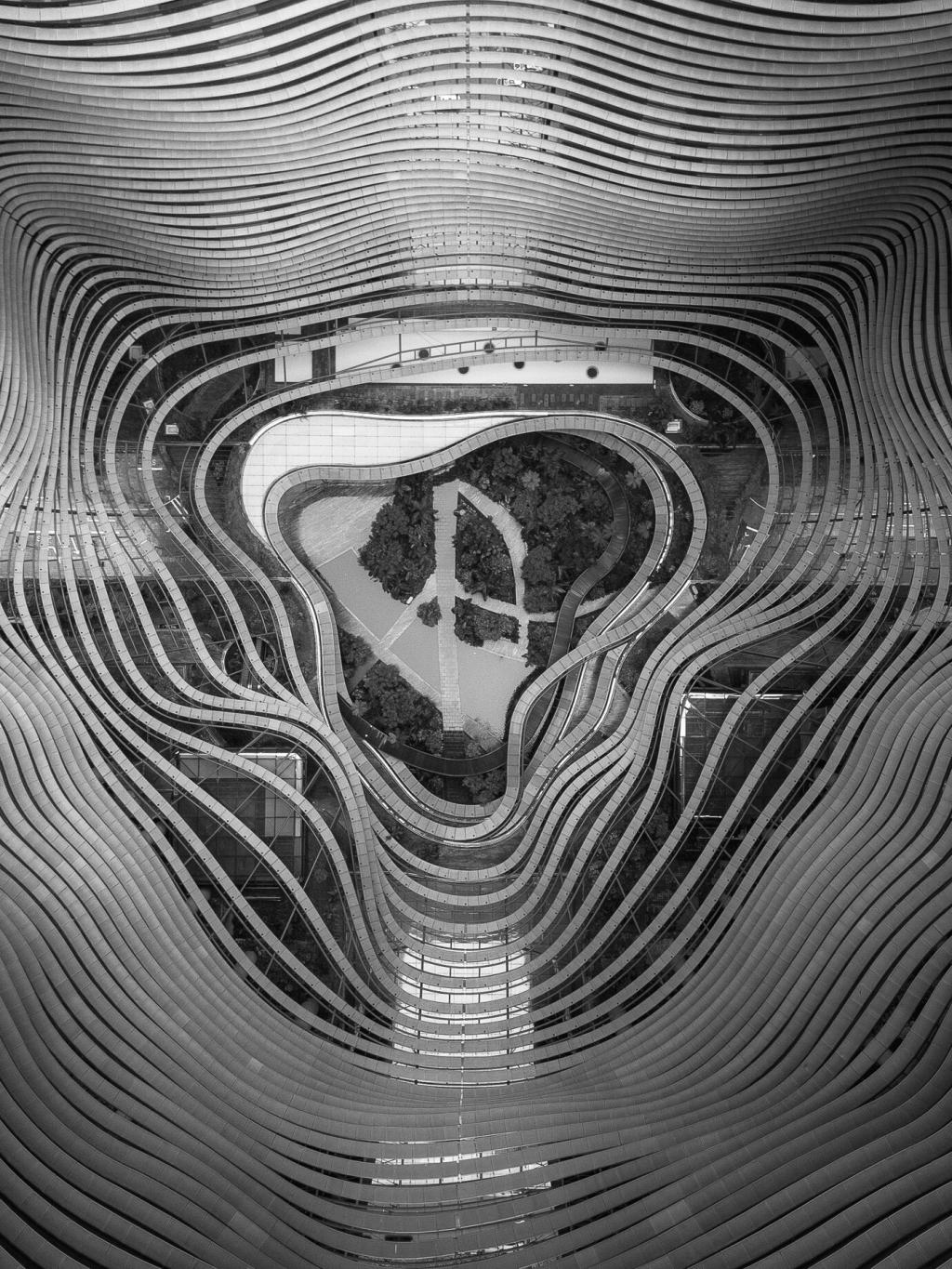Innovative Materials Transforming Architecture
The evolution of architecture is indelibly linked to the discovery and application of new materials. As society grows increasingly conscious of sustainability, function, and aesthetic, innovative building materials have become pivotal in shaping modern skylines and redefining how we experience spaces. From ultra-lightweight composites to responsive biomaterials, imaginative solutions are unlocking creative potential, driving energy efficiency, and enriching design flexibility. This exploration delves into the revolutionary materials transforming architecture today, examining their impact on structural possibilities, user comfort, and the environmental footprint of our built environments.
Fiber-Reinforced Polymers
Fiber-reinforced polymers are modern marvels for construction, blending high-performance fibers such as carbon or glass within a plastic matrix. They stand out for their exceptional durability, lightweight nature, and resistance to corrosion—qualities that surpass traditional materials like steel or concrete in specific applications. In contemporary architecture, these composites enable slender structural profiles, allow for rapid on-site installation, and help reduce foundational mass, thereby lessening a building’s overall environmental impact. Their design flexibility means that the aesthetic vision is never compromised, as they can be shaped into virtually any form, opening vistas for futuristic exteriors and organic geometries that would be unfeasible with heavier materials.
Carbon Fiber Elements
Carbon fiber has surged into prominence in the construction of landmark buildings and bridges, thanks to its combination of extreme tensile strength and minimal weight. Architects use carbon fiber in load-bearing structures and reinforcement where traditional steel might be too bulky or prone to corrosion. This allows for daring spans and sweeping curves with slender profiles that seem to defy gravity. The unobtrusiveness of carbon fiber also makes it ideal for renovations of historic properties, delivering structural reinforcement without altering the building’s appearance. As costs come down and manufacturing techniques improve, carbon fiber is slated to become even more integral to expressive, efficient architecture.
Glass Fiber Composites
Glass fiber composites are increasingly favored for facades, roof elements, and interior partitions. Blending glass fibers into a polymer gives these materials a semi-translucent, versatile character, allowing for imaginative applications where light diffusion and resilience are both desired. Glass fiber reinforced concrete, for example, delivers superior durability and crack resistance for exterior cladding, while also enabling intricate facade detailing and sculptural forms. Resistance to weather and chemicals adds to their appeal, making glass fiber composites an asset in harsh or coastal environments. Their lightness also speeds up installation and reduces strain on the supporting structure, supporting sustainable building practices.
Smart Materials: Responsive Architecture
01
Thermochromic glass transforms the way buildings manage daylight and heat. It possesses the remarkable ability to automatically alter its tint in response to solar intensity or temperature changes, minimizing solar gain on hot days while remaining clear in cooler, overcast conditions. This results in more stable internal temperatures, significant reductions in energy consumption for heating and cooling, and improved occupant well-being by controlling glare. Thermochromic glass allows designers to envision façades that not only look futuristic but actively contribute to the sustainability and resilience of the built environment.
02
Phase change materials (PCMs) are engineered substances capable of absorbing and releasing vast amounts of energy as they shift between solid and liquid states. Integrated into walls, floors, or ceilings, PCMs help regulate interior temperatures by capturing heat during the day and releasing it as spaces cool, effectually smoothing out the peaks and troughs of daily thermal cycles. This technology lessens reliance on mechanical heating or cooling systems, lowering operational costs and carbon footprint. As innovation advances, PCMs are finding broader application in both residential and commercial structures, enhancing indoor comfort and environmental performance.
03
Electrochromic facades bring a high-tech edge to building envelopes. By applying a small electric voltage, these surfaces can switch from transparent to opaque or various shades of tint, giving unparalleled control over privacy, light levels, and solar gain. Such responsiveness improves not only energy efficiency but also user experience, as building occupants can tailor their environment in real-time. These facades are especially valuable in urban settings, where solar control and views are paramount. The growing integration of electrochromic systems heralds a future where building exteriors are as interactive and intelligent as the digital devices we use every day.
Structural glass systems have revolutionized modern architecture by enabling entire walls, floors, and even stairs to be constructed from transparent glass. These advancements go far beyond simple windows, relying on precision engineering and new fabrication techniques to bear substantial loads safely. The results are luminous interiors awash with daylight and dramatic uninterrupted views, perfect for spaces that emphasize openness and visual fluidity. Glass systems can also be combined with laminated layers or incorporated with performance coatings to provide energy efficiency and safety, making them as practical as they are beautiful.
Transparent and Translucent Innovations
Previous slide
Next slide

The 3D printing of concrete is revolutionizing the way buildings are conceived and executed. Specialized printers can extrude carefully formulated concrete in intricate patterns to construct walls, entire homes, and even bridges without conventional formwork or scaffolding. This approach slashes labor costs, curbs waste, and permits sculptural curves or complex surface textures that would be labor-intensive or impossible with standard molds. Concrete printing also facilitates integrating building services and insulation directly into structural elements. The implications for affordable housing, rapid disaster response, and architectural daring are just beginning to be realized.

Polymer-based 3D printing in architecture extends far beyond prototyping. Advanced large-format printers can fabricate customized facade panels, lightweight furniture, and decorative fixtures with exceptional speed and accuracy. These polymers can be reinforced or combined with recycled materials, lending structural strength and a measure of sustainability. The adaptability of 3D printers means that designers can craft unique elements for each project, breaking free from the repetitive constraints of mass production. As materials science progresses, we can expect functional, high-performance printed polymers to increasingly enter the domain of permanent construction.

Hybrid 3D printing merges diverse materials—such as metals, concrete, and plastics—in a single workflow, opening possibilities for multi-functional, integrated building systems. By precisely depositing different materials where needed, hybrid printing can produce elements that merge structure, insulation, and finish in a single pass. This approach speeds up construction, optimizes material usage, and makes built environments more adaptable and efficient. The confluence of robotics, design, and material science in hybrid printing is poised to redefine fabrication processes and challenge the boundaries of architectural form.
Structural Insulated Panels from Recycled Content
Structural insulated panels (SIPs) made from recycled or bio-based content offer a sustainable alternative to conventional wall and roofing systems. These panels typically sandwich layers of high-performance insulation between boards crafted from recycled wood, plastics, or plant fibers. The result is an energy-efficient, rapidly installable enclosure that cuts heating and cooling demand. SIPs dramatically reduce waste onsite and at end-of-life disposal, embodying principles of circular design. Their precision and uniformity also ensure high building performance standards, making them a mainstay of green construction.
Reclaimed Brick and Timber
Reclaimed brick and timber return the narrative of historic structures to new creations while conserving resources and reducing landfill use. Each salvaged brick or beam carries unique textural and visual qualities, imbuing modern buildings with a sense of lineage and character. Sourcing and preparing reclaimed materials may demand some effort, but the payoff extends to durability, environmental savings, and meaningful architectural expression. Increasingly, architects are specifying reclaimed elements not only as a nod to the past but also as a potent strategy for a lower-carbon built environment.
Recycled Plastic Building Products
Recycled plastics are being transformed into durable building products, from facade cladding and decking to roof tiles and insulation. Chemical advancements now allow plastics to be processed into robust, attractive forms suitable for both interior and exterior use. These materials reduce the demand for virgin petrochemicals and direct vast quantities of waste away from landfills. Additionally, recycled plastic products can often be manufactured in an array of colors and finishes, extending design options for architects. Their resistance to moisture, pests, and wear makes recycled plastics a practical and environmentally smart choice in contemporary construction.
High-Performance Insulation and Envelope Materials
Vacuum Insulation Panels
Vacuum insulation panels (VIPs) represent a leap in thermal performance, providing up to ten times the insulation effectiveness of traditional materials within a fraction of the thickness. Composed of a porous core surrounded by a sealed envelope, VIPs eliminate air movement, drastically slowing heat transfer. Their slimness and efficiency permit designs with sleeker walls and more usable interior space. Because VIPs are delicate and require skillful installation, they’re mostly found in high-performance projects where space-saving and ultra-low energy use are priorities. As production scales and costs decrease, their accessibility will broaden.
Aerogels
Aerogels are among the lightest and most effective insulating materials available, formed by extracting liquid from gels to leave a nano-porous solid. Their remarkable capacity to block thermal energy, combined with partial translucency, is making them an intriguing choice for energy-efficient, daylight-rich walls, windows, and skylights. Aerogels can also be integrated into rendered plasters or roof assemblies to control heat flow without adding significant bulk. Although their cost has historically limited widespread use, advances in production are bringing aerogels into mainstream construction and enabling new forms of climate-responsive architecture.
Insulated Glazing Technologies
Insulated glazing has evolved well beyond traditional double or triple-pane units. Today’s high-performance glazing may feature coatings that reflect infrared heat, gas infills like argon or krypton, and secondary internal films that sharply boost thermal resistance while retaining slender profiles. Dynamic glazing technologies, such as those that adjust tint in real time, are also being incorporated to optimize daylight, conserve energy, and enhance occupant comfort. By tailoring light transmission, reducing condensation, and maximizing views, advanced insulated glazing is redefining the potential for transparent building envelopes.
